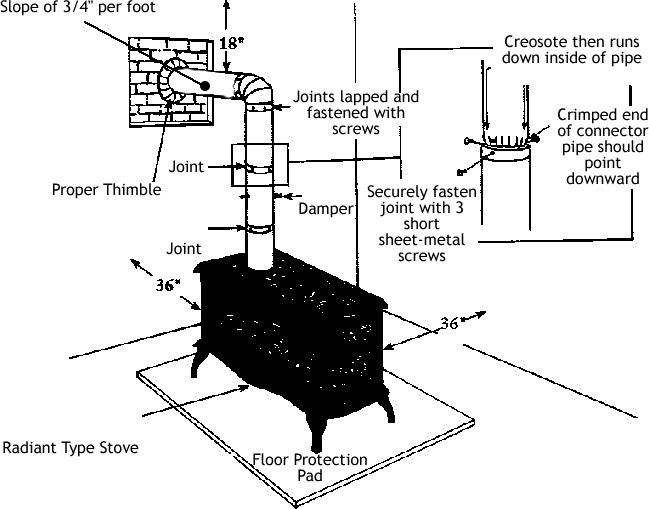Things to Look for from the Cooking Appliance Setup Expert
Regarding upgrading your kitchen, selecting the right stove and having it installed correctly can make all the difference in your cooking experience. Whether you decide on a gas, electric, or induction model, the process involves beyond just unboxing a new appliance and plugging it in. Log Burning stove installation is where a stove installation specialist comes into play. These professionals not only bring their expertise to the table but also ensure that your new stove operates safely and efficiently.
In this guide, we'll lead you through everything you can expect from your stove installation specialist. Starting with understanding the differences between gas and electric stoves to finding out how long the installation process may take, we’ve got you covered. We'll also highlight essential preparation steps and share safety tips, so you can approach this important kitchen upgrade with confidence. Whether you’re considering a brand new setup, a replacement, or transforming, understanding the role of a stove installation specialist will help you make informed decisions for your home.
Choosing the Right Stove
Selecting the appropriate stove is a critical choice for every resident, as it influences not only cooking performance and overall kitchen functionality. When considering your options, it's essential to evaluate whether a gas, electric, or induction stove most suits your cooking style and needs. Gas stoves offer accurate temperature control and instant heat, making them popular among dedicated cooks. Electric stoves, on the other hand, are generally easier to install and maintain, while induction cooktops offer fast cooking times and power efficiency.
It's also important to take into consider the layout and size of your kitchen. The dimensions of your available space will dictate the type and size of stove that is suitable. If you're upgrading from one type of stove to another, you may need to think about extra factors like gas line needs or electrical upgrades, particularly when transitioning from electric to gas or vice versa. This aspect can greatly impact your overall installation experience.
Lastly, homeowners should think about extra features that might improve their cooking experience, such as self-cleaning options, smart technology, or dedicated cooking zones designed for specialty cookware. Take the time to explore various brands and models to identify the most suitable fit for your home. This thorough evaluation will help ensure your new stove meets your culinary requirements while coordinating with your kitchen's aesthetics and needs.
Setup Process and Security
Preparing for your stove installation involves multiple key steps to guarantee everything goes as planned and securely. Initially, evaluate the space where the fresh oven will be set up. Take measurements of the space, considering the dimensions of the oven and any additional clearance required for security and ventilation. Remove any hurdles that may interfere with the installation procedure, such as previous devices or items. It's also important to have the essential tools and equipment ready, which might include a tool set, screwdriver, level, and any particular connections needed for gas or electrical models.
Security should always be a main focus during oven setup. If you are choosing a natural gas oven, ensure that there is a proper gas line in place, and consider having a professional inspect the line for faults before moving forward. For electric ovens, verify that your kitchen's electrical system can handle the new appliance, including the correct outlet and circuit capacity. Always comply with local codes and regulations, as these can differ. If permits are required, make sure to obtain them prior to setup.
Ultimately, employing a skilled stove installation specialist is often the best way to guarantee security and compliance with community regulations. They have the skills to manage any complex installations and can navigate potential issues that may arise. If you decide to set up the stove on your own, make sure to observe all safety guidelines, including ensuring proper ventilation and checking for gas leaks after the installation. Taking these precautions can reduce the risk of accidents and ensure your new stove operates effectively.
Care and Troubleshooting
Correct maintenance of your stove is vital for ensuring optimal performance and longevity. For gas stoves, it is important to regularly inspect burner caps and grates for food debris and spills. Cleaning these parts after each use will aid prevent clogs and ensure even heating. Electric stoves should have their coils and ceramic surfaces wiped down to maintain efficiency and avoid electrical issues. Creating a schedule for regular maintenance can save you time and money in the long run.
If your stove isn’t functioning correctly, problem-solving steps can help reveal the issue. For gas stoves that aren’t lighting, check the gas supply and ensure the igniter is free of debris and functional. If the burners work but the oven doesn't, inspect the oven ignite circuit. For electric stoves, common issues include the unit not heating or temperature discrepancies, which can often be solved by checking the power supply and the configurations. Always consult your user manual for specific troubleshooting advice.
In cases where issues persist, consider reaching out a stove installation specialist. They possess the skills to diagnose more complex problems and provide peace of mind. Regular professional servicing can also help catch potential issues before they become major repairs. Remember to document any problems you encounter, as this information can be invaluable to a technician for effective troubleshooting and restoration of your stove’s functionality.
